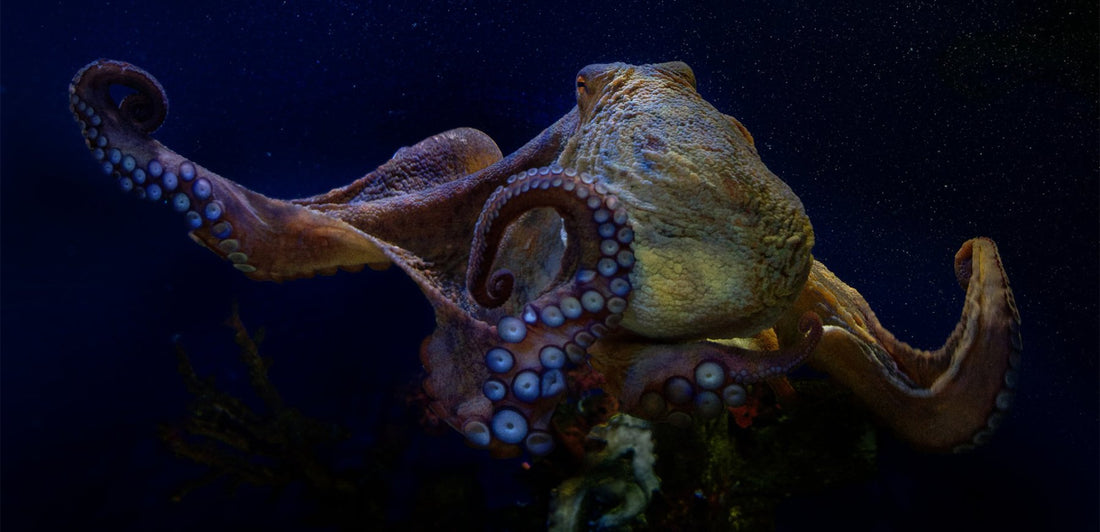The octopus is a mystical and often misunderstood creature. Known to be one of the most intelligent living beings on the planet, boasting nine (yes, nine!) brains – one in its head and one in each of its eight arms. That same intelligence also means it has often been unfairly betrayed as a sinister threat in folklore, Sci-Fi and popular culture. The Kraken springs to mind!
Away from all the scaremongering and man’s irrational fear of the unknown, the octopus has much to teach us about ecosystems, especially when it comes to what goes on beneath the ocean’s surface. There have even been some suggestions, by authors like Adrian Tchaikovsky, that Octopus could teach us about what our future relationship with AI might be like. Intrigued? You should be!
“The octopus is a mystical and often misunderstood creature.”
All this intrigue meant that when a deep sea octopus garden was discovered off the coast of California in 2018 it sparked interest from across the globe. Why were thousands of pearl octopus gathering in one place? Was this a phenomenon that could bring scientists closer to understanding these wondrous creatures? Fast forward to the present day and scientists are beginning to serve up some of what they’ve learnt about the amazing deep sea octopus garden.

Why Do Pearl Octopus Gather In The Garden?
Scientists from the Monterey Bay Aquarium Research Institute (MBARI) used remote control submersibles equipped with cameras and temperature sensors to monitor the octopus found in a stretch of sea bed located 80 miles off the coast of California. Over time they discovered that the octopus garden was in fact a nesting ground.
The area is peppered with hydrothermal springs, the heat from which enables octopus eggs to develop and hatch quicker than if they were laid in colder waters. An octopus egg can take up to 10 years to hatch in regular ocean temperatures, but eggs were witnessed hatching within 2 years in the warm waters of the octopus garden. Such ingenuity once again points to the intelligence and resourcefulness of octopuses, which are also known for using coconut shells as tools or shelter, in much the same way that we, humans, might do.

Where Do Octopuses Go When They Leave The Garden?
The site also acts as a mating ground, with male and female octopuses arriving in the garden together. Unfortunately, this is where their journeys end. Male pearl octopuses, in line with other species of octopus, perish soon after mating. Their female mates fare slightly better, generally living until their eggs hatch, at which point they are also reclaimed by the sea.
However tragic this circle of life might be, fallen octopus bodies are invaluable to the deep sea garden’s ecosystem, providing food and nutrients. The scientists observed that creatures such as snails and starfish regularly feasted on octopus corpses.

Do Other Octopus Gardens Exist?
At the time of writing there are only a handful of other known octopus gardens, but scientists suspect that many more are out there and ready to be discovered. On the one hand it could be a good thing that they remain hidden, but on the other, their existence being known could lead to them being given special protected status, perhaps under the new UN High Seas Treaty, so that fishing and deep sea mining practices do not damage them.

Now more than ever it is imperative that everything possible is done to protect our oceans, so that incredible discoveries like these can still be made, for the benefit of mankind and the planet.
“It’s important that we consider the value of these little spots, and not indiscriminately wipe out areas of seabed.” - Dr Jim Barry, from MBARI








